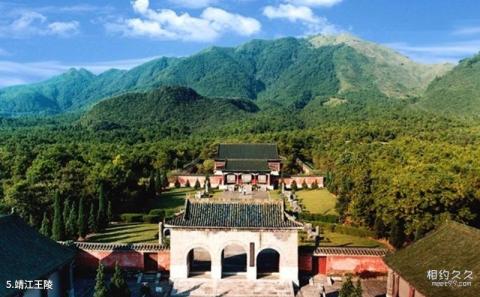
Introduction to the Jingjiang Royal Tombs: The Jingjiang Royal Tombs are located at the southwest foothills of Mount Yao. They are the largest and best-preserved tombs of Ming Dynasty vassal kings in my country. 11 of the 14 Jingjiang kings who were enfeoffed in Jingjiang (Guilin) during the Ming Dynasty are buried there. In Yaoshan Mountain, the king's cemetery and the tombs of other vassal and royal families form a vassal tomb group with a radius of hundreds of miles and full of Jiangnan characteristics. It is known as the "First Mausoleum in Lingnan".
The Jingjiang Royal Tomb is backed by Mount Yao, with strange peaks facing each other in front. A natural entrance is formed between the peaks, with a wide view and protected by mountains on the left and right. The layout of the royal tombs is rectangular, with the mausoleum gate, the middle gate, the Xiang Hall and the underground palace in sequence on the central axis. The larger tombs cover an area of more than 270 acres, while the smaller tombs cover less than 10 acres. They are usually divided into two parts: the outer and inner palaces. There are wing rooms, mausoleum gate, Shinto, jade belt bridge, stone figures, stone beasts, etc. on the outside. The inner palace includes the middle gate, Xiangdian, stone people and underground palace, etc.
Among the 11 Jingjiang Tombs, the Jingjiang Zhuang Jian Tomb is currently open to tourists. It is the joint tomb of the third generation Jingjiang King Zhu Zuojing and his concubine Shen. The cemetery covers an area of 87 acres and has a history of more than 580 years. Among them are red walls and green tiles, carved beams and painted buildings, single-eaves resting hills, vermilion paintings, bridge railings, and gurgling water. In the Xiang Hall, some of the unearthed cultural relics from the Jingjiang royal tombs are displayed, including a beautifully shaped blue and white plum vase, which is rare in the world. , extremely precious.
